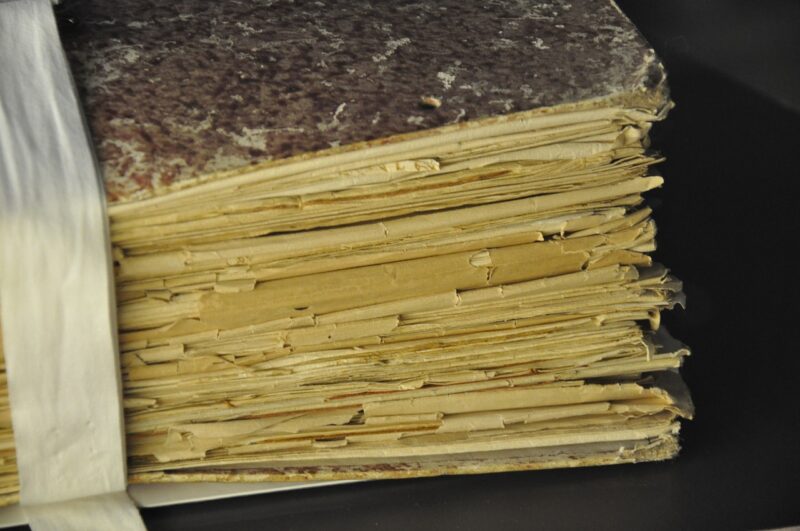
The Voynich Manuscript is one of the most enigmatic artifacts in the world, a book filled with bizarre illustrations, strange symbols, and indecipherable text. Despite numerous attempts from historians, linguists, and cryptographers to understand its content, the manuscript remains a mystery over 600 years after its creation. It’s like peering into a puzzle box that doesn’t seem to fit any known categories of literature or science, leaving many to wonder what secrets it might hold.
1. The Origins of the Voynich Manuscript
The origins of the Voynich Manuscript are shrouded in uncertainty. It is believed to have been created in the early 15th century, around 1400 to 1430, and it is named after Wilfrid Voynich, a rare book dealer who purchased it in 1912. The manuscript, crafted on vellum, measures approximately 9 inches by 6 inches and consists of around 240 pages, although a few pages are missing.
The manuscript has been carbon-dated to the 15th century, but its exact origin is still debated. Some scholars suggest that it may have been created in Northern Italy due to the art styles and the presence of certain plants depicted within its pages. However, no verified author or purpose has been conclusively identified, leaving the book’s true significance a tantalizing enigma.
2. Physical Characteristics of the Manuscript
The Voynich Manuscript is adorned with exquisite illustrations, which can be broadly categorized into several sections: botanical, astronomical, biological, cosmological, and pharmaceutical, along with text filled with unique glyphs that have yet to be deciphered. The botanical illustrations depict plants that do not appear to correspond to known species, further adding to the manuscript’s mystique.
Each section of the manuscript showcases its thematic elements:
- Botanical Section: Features a multitude of plants, often with colorful depictions, but none of them can be definitively identified.
- Astronomical Section: Contains diagrams of celestial bodies and zodiac signs, hinting at some astrological or astronomical significance.
- Biological Section: Displays odd figures seemingly engaged in alchemical or medical practices, though their specific meanings are lost to time.
The entire manuscript is written in an unknown script, known as Voynichese, which appears to be a mix of letters that do not correlate directly with known languages. Despite numerous attempts by codebreakers and linguists, no one has successfully deciphered the text of the manuscript. This has led to it being dubbed “the book no one can read.”
3. The Theories Behind Its Content
The Voynich Manuscript has become the subject of numerous theories, each attempting to explain its purpose and meaning. Some of the most prominent theories include:
- An Herbal Guide: Many researchers believe the manuscript may serve as a herbal guide or pharmaceutical reference of unknown plants for medicinal purposes.
- A Scientific Treatise: It could potentially be a lost work of medieval science, with diagrams meant to illustrate methods for alchemical experiments or astronomical observations.
- A Code or Cipher: Some cryptographers argue that it is a complex code or cipher, possibly created by someone trying to obscure their ideas and knowledge, akin to a secret language.
- A Hoax: Others believe the manuscript could be a sophisticated hoax, crafted by an unknown author as an elaborate piece of art with no actual meaning.
Each theory presents fascinating possibilities, but none have gained widespread acceptance or definitive proof. The manuscript continues to be an enigma that drives scholarly inquiry and public wonder, with each interpretation adding to its charm.
4. Notable Attempts to Decode the Manuscript
Over the years, several notable individuals have poured years of effort into deciphering the manuscript. Some efforts have yielded partial results, while others produced little beyond speculation:
- William Friedman: A famous American cryptanalyst who worked on the Voynich Manuscript during World War II, Friedman speculated that it was a sophisticated code. He concluded that no known cipher techniques could fully explain the text’s structure.
- Milan D. M. & A. Malachi: In the 1990s, these researchers claimed they had developed a method to decipher the text based on linguistic and statistical analysis. However, their claims were met with skepticism by many in the academic community.
- The Voynich Code Group: A group of volunteers dedicated to analyzing the manuscript using collective intelligence and crowd-sourcing methods. While numerous patterns were identified, they were not enough to unlock its secrets.
Despite these numerous attempts, the Voynich Manuscript remains undeciphered, a testament to the complexities of its text and formatting. It has perplexed both mathematicians and literary experts from various fields.
5. Cultural Impact and Modern-Day Fascination
The allure of the Voynich Manuscript extends beyond academia; it has inspired countless novels, films, and documentaries. Its mysterious nature continues to captivate the imagination of people around the globe, leading to various art forms and pop culture references. It serves as a symbol of the unknown and the quest for knowledge.
The manuscript has been digitized and made available online, which has opened it up to a broader audience. Numerous online communities and forums exist where enthusiasts discuss their theories and interpretations, contributing to a living culture surrounding this fascinating relic.
Conclusion: The Unending Mystery
In conclusion, the Voynich Manuscript serves as a powerful reminder of the mysteries that still exist in our world, fueling curiosity and imagination while eluding our understanding. Although its origins and purposes remain unknown, the manuscript stands as a testament to human creativity and the perennial quest for knowledge.
Whether the Voynich Manuscript was designed as a book of secrets, a whimsical portfolio of an artist’s imagination, or an ancient guide to herbal medicine, its allure continues to bewitch all who encounter it. As new tools and technologies arise that may aid in deciphering its contents, we stand on the cusp of potentially unraveling one of history’s greatest enigmas. Perhaps one day, we might finally read the words of the book no one can read.






